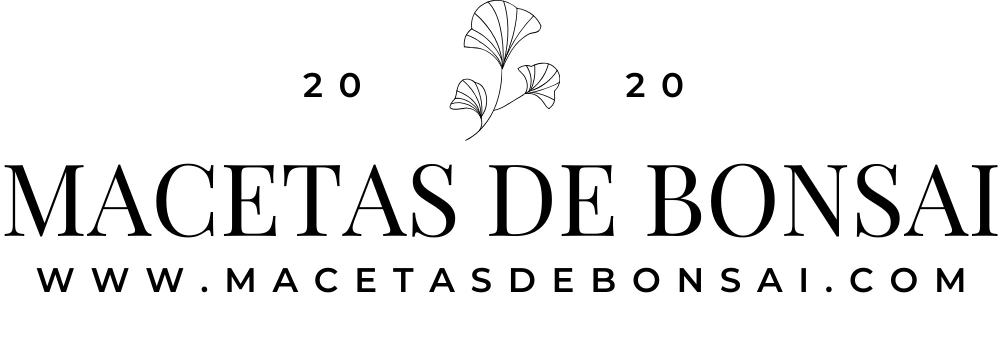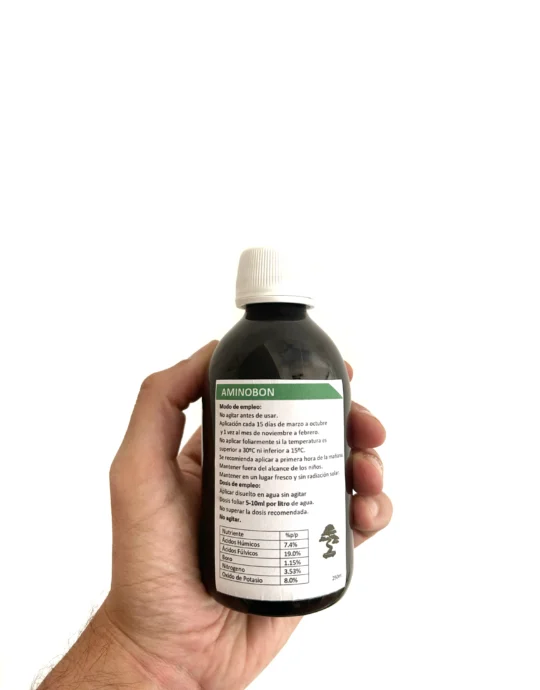Currently Empty: 0.00€
Bonsai fertilizer
Amino acids: Advantages over Chemical Fertilizers
This document analyzes the properties and advantages of amino acids as foliar applications in bonsai compared to traditional chemical fertilizers. Through the study of various scientific results, it will be demonstrated how amino acids can provide agronomic, economic and environmental benefits to the care and maintenance of bonsai trees.
Remember that in our online store www.macetasdebonsai.com you can find the best amino acids for your bonsai, to see them click HERE.
Introducción
Proper nutrition is essential to ensure the health of bonsai trees. Although chemical fertilizers have been common in the care of these small masterpieces, there is a growing trend towards the search for more sustainable and efficient alternatives, such as the foliar application of amino acids.
What are Amino Acids?
Amino acids are organic molecules that contain an amino group (-NH2) and a carboxyl group (-COOH). They are the basic components of proteins and play a fundamental role in plant metabolism.
Amino acids as Foliar Application in Bonsai
The foliar application technique involves the direct administration of nutrients to the bonsai leaves. This practice is especially relevant because the leaves, through their epithelial structure, have the ability to absorb and use nutrients more immediately than through the substrate. A critical aspect in this process is the apoplast pathway.
The apoplast is the extracellular space contained in plant tissue, which includes cell walls, intercellular spaces and xylem. When a foliar solution is applied, amino acids and other solutes move through the apoplast, taking advantage of this free space to distribute. Subsequently, amino acids are actively absorbed by cells through specific transporters present in the plasma membranes of plant cells.
Foliar absorption of amino acids is especially efficient due to several reasons:
- Size and solubility of molecules: Amino acids, due to their small size and polar nature, can penetrate and move quickly through leaves.
- Minimal cuticular barrier: Although the leaf cuticle acts as a barrier to water loss, its semipermeable nature allows the entry of small, water-soluble molecules, such as amino acids.
- pH optimization: Foliar solutions can be adjusted to an optimal pH to maximize amino acid uptake, improving their effectiveness compared to substrate-applied nutrients that can be affected by soil pH.
In summary, foliar application of amino acids in bonsai is a promising technique, and the uptake mechanism through the apoplast pathway facilitates efficient delivery of these essential nutrients to plant cells. This provides a notable advantage over substrate applications, especially when a rapid response is sought or when substrate conditions are not ideal for nutrient uptake.

Advantages of Amino Acids over Chemical Fertilizers:
1. Improves Nutrient Absorption
Amino acids play a crucial role in nutrient mobility and absorption in bonsai, partly due to their ability to act as chelating agents. But what does it really mean for a nutrient to be chelated?
The term "chelate" comes from the Greek "chelē", which means claw. In chemistry, a chelate refers to a complex in which a central metal ion, typically a transition metal ion, is bonded to a ligand (in this case, the amino acid) at at least two sites, forming at least one. heterocyclic ring. This structure stabilizes the metal ion and protects it from interacting or reacting with other substances that could precipitate it or make it biologically inaccessible.
Importance of Chelated Micronutrients in Bonsai:
- Improved Solubility: Chelation increases the solubility of micronutrients in water. Chelated metals are more soluble than their non-chelated counterparts, making them easier to absorb into roots and leaves.
- Stability at Different pH: In soils or substrates with non-optimal pH, certain nutrients become unavailable to plants. Chelates are stable over a wide pH range, ensuring that nutrients remain available to plants regardless of substrate conditions.
- Reduction of Antagonistic Interactions: Chelated nutrients are less likely to interact negatively with other ions in the soil, preventing precipitation and ensuring their availability.
- Improves Absorption: Chelated nutrients are more easily absorbed through cell membranes due to their structure and charge. Amino acids, by acting as chelators, can improve the efficiency in the absorption of micronutrients such as iron, zinc, copper and manganese.
- Foliar Application Efficiency: Since chelation improves nutrient solubility and availability, chelated nutrients are particularly effective when applied directly to leaves, where rapid absorption is essential.
In conclusion, chelation, facilitated by amino acids, is essential to optimize the absorption and utilization of micronutrients in bonsai. It ensures that these vital elements are accessible, mobile and efficiently absorbed, thus maximizing the health and vitality of the bonsai.
2. Stimulation of Growth and Development
The application of amino acids has been shown to enhance the health, vigor and aesthetics of bonsai, helping them better cope with biotic and abiotic stress.
3. Stress Reduction in Bonsai
Amino acids act as osmoprotectants, reducing damage caused by stressors such as droughts and sudden changes in temperature.
4. Environmental Sustainability
The application of amino acids reduces the need for chemical fertilizers, which reduces the environmental impact associated with the production and use of these products.
5. Profitability
Although the initial cost may be higher, the efficiency of amino acids reduces the total amount of nutrients needed, which can result in long-term savings.
6. Conclusion
Amino acids as a foliar application offer a viable and sustainable alternative to traditional chemical fertilizers in bonsai care. Through a series of agronomic, economic and environmental advantages, amino acids have the potential to revolutionize nutrition practices in the art of bonsai and promote more sustainable and environmentally friendly care.
References:
- Sharma, HSS, Fleming, C., Selby, C., Rao, JR, & Martin, T. (2012). Plant biostimulants: a review on the processing of macroalgae and use of extracts for crop management to reduce abiotic and biotic stresses. Journal of Applied Phycology, 25(2), 465-490.
- Ertani, A., Nardi, S., & Altissimo, A. (2013). Review: Long-term research activity on the biostimulant properties of natural origin compounds. Horticulture Act, (1009), 141-148.
- Taiz, L., Zeiger, E., Møller, I.M., & Murphy, A. (2018). Plant physiology and development. Sunderland: Sinauer Associates.




